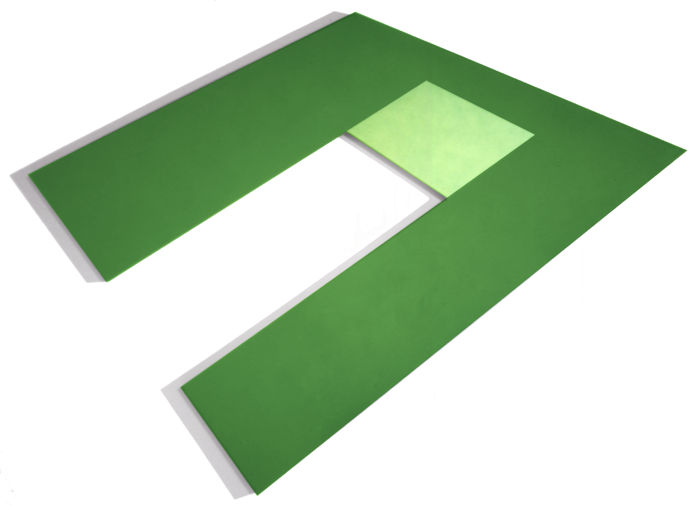|
 It
was an exciting time of the sixties for painting when the art historian
Barbara Rose applied the term "Abstract Illusionism"
to the works of a number of artists that had reintroduced illusion
into their painting. Since the beginning of the 20th century painting
had become flatter and flatter, more two-diminsional. Reversing
this trend, I began using first using isometric perspective to
"draw" and shape my paintings, then one-point, two-point,
and later three-point perspective illusion to give the perception
of depth and at the same time retaining the flatness
and color interaction of Modernist painting. However I would like
to think that, and it was always my intention to keep the paintings
abstract at their core, surmising that a slab is at least
as abstract as a square. I did not have the goal of realism in
mind, any more than Frank Stella did in his paintings of the sixties
which could be termed, "painting as an object"
or minimal. Rather, my work can be seen a "painting as the
illusion of an object." Reintroducing perspective illusion
into the main stream of the art of painting is my contributiion. It
was an exciting time of the sixties for painting when the art historian
Barbara Rose applied the term "Abstract Illusionism"
to the works of a number of artists that had reintroduced illusion
into their painting. Since the beginning of the 20th century painting
had become flatter and flatter, more two-diminsional. Reversing
this trend, I began using first using isometric perspective to
"draw" and shape my paintings, then one-point, two-point,
and later three-point perspective illusion to give the perception
of depth and at the same time retaining the flatness
and color interaction of Modernist painting. However I would like
to think that, and it was always my intention to keep the paintings
abstract at their core, surmising that a slab is at least
as abstract as a square. I did not have the goal of realism in
mind, any more than Frank Stella did in his paintings of the sixties
which could be termed, "painting as an object"
or minimal. Rather, my work can be seen a "painting as the
illusion of an object." Reintroducing perspective illusion
into the main stream of the art of painting is my contributiion.
/rd
|



